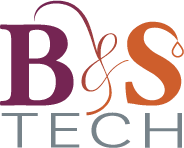Since 2 December 2021, European regulations have authorized the names "dealcoholized wine" and "partially dealcoholized wine" for wines that have undergone a dealcoholization process.
But what exactly is behind these names? What is allowed and not allowed by the regulations? What are the processes?
Let's take a moment to go back in detail on this major change for the no-low alcohol wine market.
To respond to the growing phenomenon of light and alcohol-free wines, the new European Regulation 2021/2117 of 2 December 2021 has created two new labelling terms for wines that have undergone a dealcoholization treatment:
"Dealcoholized wine" and "Partially dealcoholized wine".
This applies to wines, sparkling wines, carbonated sparkling wines and semi-sparkling wines.
For aromatized wine products: there is no equivalent provision in EU Regulation 251/2014 at the moment.
In addition, the European regulation also specifies the dealcoholization technologies authorized to be able to use the mentioned terms:
3 dealcoholization techniques are authorized :
‐ Membrane techniques (reverse osmosis)
-Distillation
-Partial vacuum evaporation
In reality, distillation and vacuum evaporation are based on the same physical principle, on the other hand, there are two types of machines that can carry out dealcoholization following this principle (the Spinning Cone Column and the packing column).
The regulation also states that the oenological practices allowed on wines BEFORE dealcoholization are still applicable.
On the other hand, a big topic remains unresolved concerning oenological practices AFTER dealcoholization. The subject is currently being discussed in the committees and by the OIV in order to authorize the practices necessary for the development of quality dealcoholized wines.
This last point will be very important to frame the market and thus sort between wines using dealcoholization technologies and other drinks based on grape juice or fermented grapes that will not be able to use the terms and will, logically, must leave the wine shelves.
B&S Tech actively participates in exchanges to ensure the development of quality dealcoholized wines! We will therefore not fail to inform you of the progress on this subject.
Stay tuned !
